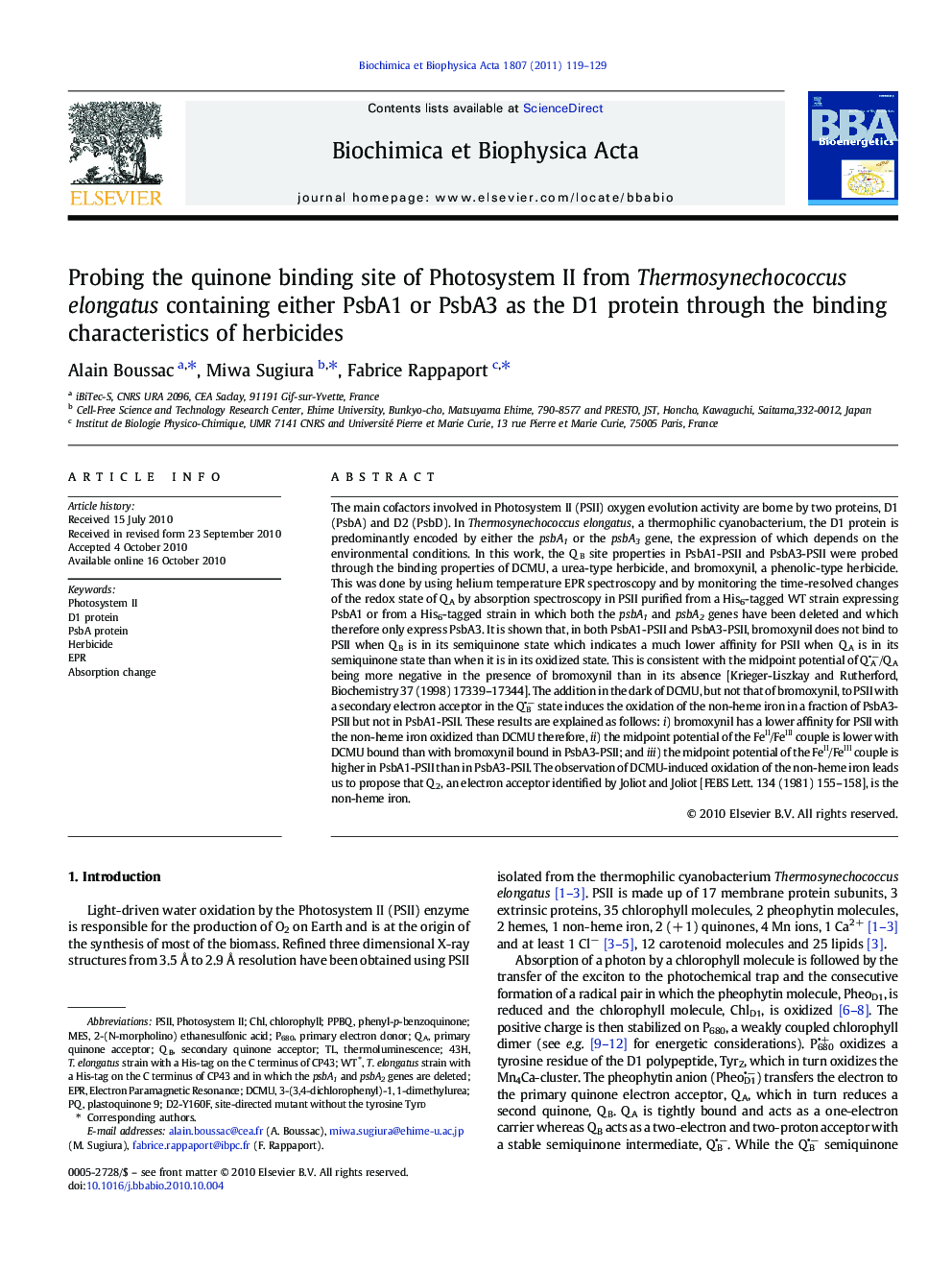| کد مقاله | کد نشریه | سال انتشار | مقاله انگلیسی | نسخه تمام متن |
|---|---|---|---|---|
| 1942747 | 1052626 | 2011 | 11 صفحه PDF | دانلود رایگان |

The main cofactors involved in Photosystem II (PSII) oxygen evolution activity are borne by two proteins, D1 (PsbA) and D2 (PsbD). In Thermosynechococcus elongatus, a thermophilic cyanobacterium, the D1 protein is predominantly encoded by either the psbA1 or the psbA3 gene, the expression of which depends on the environmental conditions. In this work, the QB site properties in PsbA1-PSII and PsbA3-PSII were probed through the binding properties of DCMU, a urea-type herbicide, and bromoxynil, a phenolic-type herbicide. This was done by using helium temperature EPR spectroscopy and by monitoring the time-resolved changes of the redox state of QA by absorption spectroscopy in PSII purified from a His6-tagged WT strain expressing PsbA1 or from a His6-tagged strain in which both the psbA1 and psbA2 genes have been deleted and which therefore only express PsbA3. It is shown that, in both PsbA1-PSII and PsbA3-PSII, bromoxynil does not bind to PSII when QB is in its semiquinone state which indicates a much lower affinity for PSII when QA is in its semiquinone state than when it is in its oxidized state. This is consistent with the midpoint potential of QA−/QA being more negative in the presence of bromoxynil than in its absence [Krieger-Liszkay and Rutherford, Biochemistry 37 (1998) 17339–17344]. The addition in the dark of DCMU, but not that of bromoxynil, to PSII with a secondary electron acceptor in the QB− state induces the oxidation of the non-heme iron in a fraction of PsbA3-PSII but not in PsbA1-PSII. These results are explained as follows: i) bromoxynil has a lower affinity for PSII with the non-heme iron oxidized than DCMU therefore, ii) the midpoint potential of the FeII/FeIII couple is lower with DCMU bound than with bromoxynil bound in PsbA3-PSII; and iii) the midpoint potential of the FeII/FeIII couple is higher in PsbA1-PSII than in PsbA3-PSII. The observation of DCMU-induced oxidation of the non-heme iron leads us to propose that Q2, an electron acceptor identified by Joliot and Joliot [FEBS Lett. 134 (1981) 155–158], is the non-heme iron.
Research Highlights
► Probing the quinone binding site of Photosystem II from Thermosynechococcus elongatus containing either PsbA1 or PsbA3 as the D1 protein through the binding characteristics of DCMU and bromoxynil.
► The electron acceptor Q2 is very likely the oxidized non-heme iron.
► The midpoint potential of the FeII/FeIII couple is higher in PsbA1-PSII than in PsbA3-PSII.
Journal: Biochimica et Biophysica Acta (BBA) - Bioenergetics - Volume 1807, Issue 1, January 2011, Pages 119–129